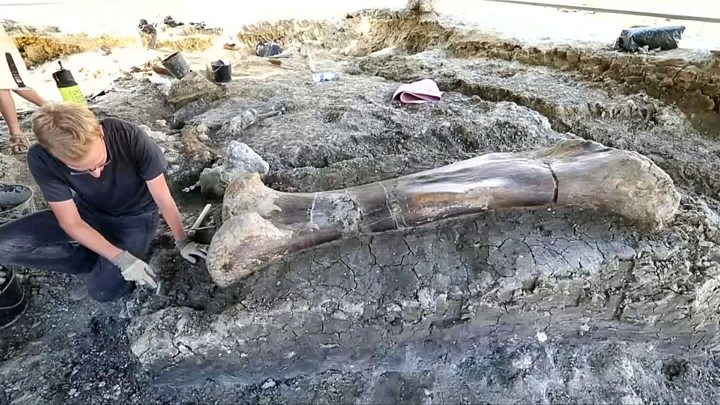Dinosaur bone: Scientists uncover giant femur in France

 Image copyright AFP
Image copyright AFP 
Scientists in south-western France have uncovered a giant dinosaur thigh bone at an excavation site that has been yielding fossils for nearly a decade.
Two metres (6.6ft) long, the femur found at Angeac is thought to have belonged to a sauropod, a plant-eating dinosaur with a long neck and tail.
Sauropods, common in the late Jurassic era, were among the largest land animals that ever existed.
Palaeontologists say they are amazed at the state of preservation of the bone.
“We can see the insertions of muscles and tendons, and scars,” Ronan Allain of the National History Museum of Paris told Le Parisien newspaper.
“This is rare for big pieces which tend to collapse in on themselves and fragment.”
Just how big was the owner of the thigh?
Such dinosaurs, which lived more than 140m years ago, would have weighed 40 to 50 tonnes, Allain told Reuters news agency.
A sauropod thigh bone found at the same site in 2010 was 2.2m long and weighed 500 kilos, according to local paper La Charente Libre.

Media playback is unsupported on your device
The femur found this week is expected to weigh about the same when it is finally removed, a job which will probably take a good week and involve a crane.
What else are they finding at Angeac?
Some 70 scientists are working this summer at the site buried deep in the vineyards of the Charente area, near the town of Cognac.
More than 7,500 fossils from at least 40 species have been recovered since 2010, making the former marsh one of the most important such sites in Europe.
Bones of stegosauruses and a herd of ostrich dinosaurs have been found, Le Parisien reports.


